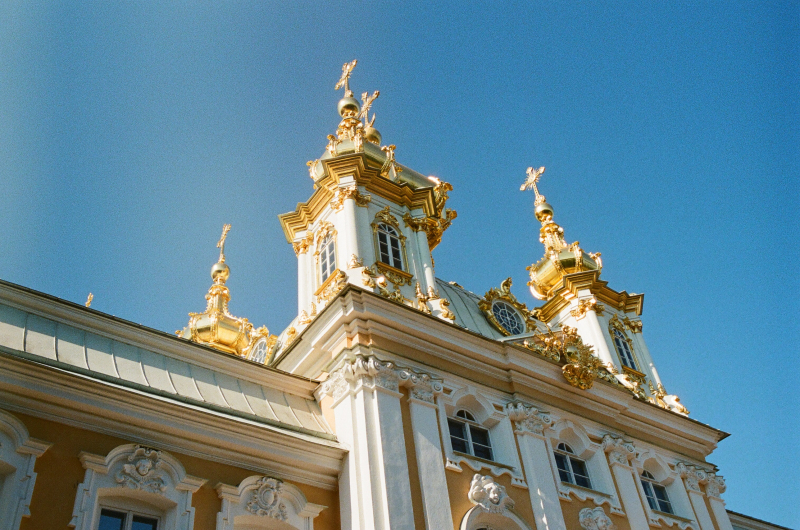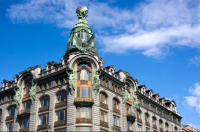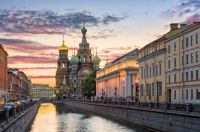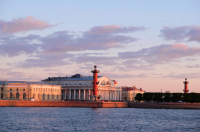From the very start, St. Petersburg’s founder Tsar Peter the Great wanted his city to be unlike any other in Russia, so he invited the best European architects to build and develop it. Among the most renowned architects who shaped the city was Swiss Italian architect Domenico Trezzini, who arrived in St. Petersburg at its foundation in 1703. It was he who designed the first and oldest landmark in the city, the Peter and Paul Cathedral with its needle-like golden spire and an angel holding a cross at its top, which is one of the most important symbols of St. Petersburg and a striking example of the Petrine Baroque style of Russian architecture.
The Baroque style emerged in Western Europe in the 16th century as a statement of the wealth and power of the Catholic Church. Most common features of the style included gigantism of proportions, theatrical interior effects created with bronze and gilding, clusters of sculpted angels and other figures, and an extensive use of trompe-l'oeil, when walls, ceilings, and other surfaces were painted with designs that ‘trick’ the observer into seeing other features such as windows, columns, ornaments and so on, in order to increase the dramatic effect.
In St. Petersburg, however, this style transformed into something completely new. In 1700-1721, Russia was waging war against the Swedish Empire, and all the efforts were thrown into supporting the army and constructing the fleet. Peter the Great’s personality also did the trick: the Tsar was known for his love for a simple lifestyle; he even worked as a ship’s carpenter during his incognito trip to Europe! So it is no wonder that he preferred the modest Dutch architecture to the flamboyant French and Italian.
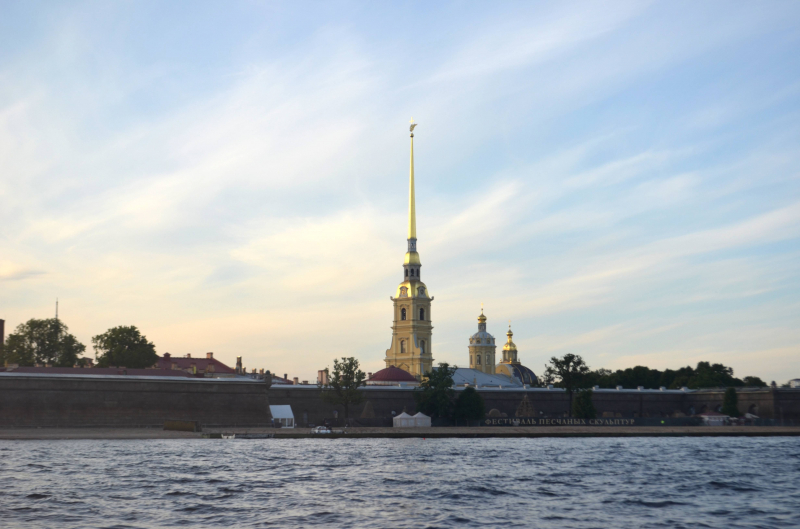
Peter and Paul Cathedral. Credit: Juan Camilo Guarin P (@jcguarinpenaranda) via Unsplash
The Petrine Baroque style is characterized by simple forms, moderate decoration, and planar two-colored façades. Apart from the Summer Palace of Peter the Great which his entourage believed to be far too small and modest for a monarch, and a few other buildings and churches, the majority of the Petrine Baroque buildings are located on Vasilyevsky Island, which was originally planned as the heart of the city. Among the most vivid examples of this style is Trezini’s Twelve Collegia building, with its candy-like façade of twelve identical three-story sections, which now belongs to St. Petersburg State University.
This white and red street-long building is so elegant and impressive that the only question that pops to your mind when admiring its reserved beauty is why isn’t it located on Universitetskaya Embankment facing the Bolshaya Neva? There is a legend saying that Peter the Great entrusted the building of the Twelve Collegia to his friend St. Petersburg Governor General Aleksander Menshikov, who decided that this 400 meter-long behemoth would leave no room for his own splendid palace and ordered to build it perpendicular to the river instead. According to the legend, this is how the opulent ocher Menshikov Palace which was actually the first stone building in the city, became, together with the Kunstkamera, the compositional center of the Embankment.
All these buildings, however, although baroque in spirit, were essentially regular and modest. It was with Elizabeth’s accession to the Russian throne in 1741 that St. Petersburg’s baroque architecture bloomed. Unlike her father, the new empress loved everything grand and glorious, and so did her entourage. This was the heyday of the Russian Empire, and all art forms, including architecture, were called upon to celebrate its glory. This was the era of Elizabethan Baroque, characterized by gigantic proportions, golden splendor decorations, and dense ornamentation. Among the most renowned figures of this period was the Italian architect Francesco Bartolomeo Rastrelli.
If you turn your back to the Kunstkamera, you’ll see Rastrelli’s main masterpiece, the opulent mint green-and-white Winter Palace. This elegant, monumental palace, which used to serve as the official residence of the Russian monarchs and now houses the Hermitage Museum, is a wonderful example of the Elizabethan Baroque style, as well as the synthesis of architecture and decorative art. Even if you’re not a fan of Baroque cake-like façades, it’s still impossible not to be impressed by this palace’s abundant decoration with all these columns, statues, mascarons, cartouches, and rocailles! Let alone its truly grandiose interiors!
Rastrelli also created one of the most joyous fusions of traditional Russian architecture and Baroque design: the blue, white and gold cathedral of the Smolny Convent. I still remember that winter morning when I first saw this cathedral many years ago when I was a little girl and was taken aback by its size and grandeur and the way it glowed in the dim dawn light. What’s interesting is that it was meant to be even higher: the projected bell-tower was to become the tallest building in St. Petersburg, but Elizabeth’s death prevented Rastrelli from completing this grand design.
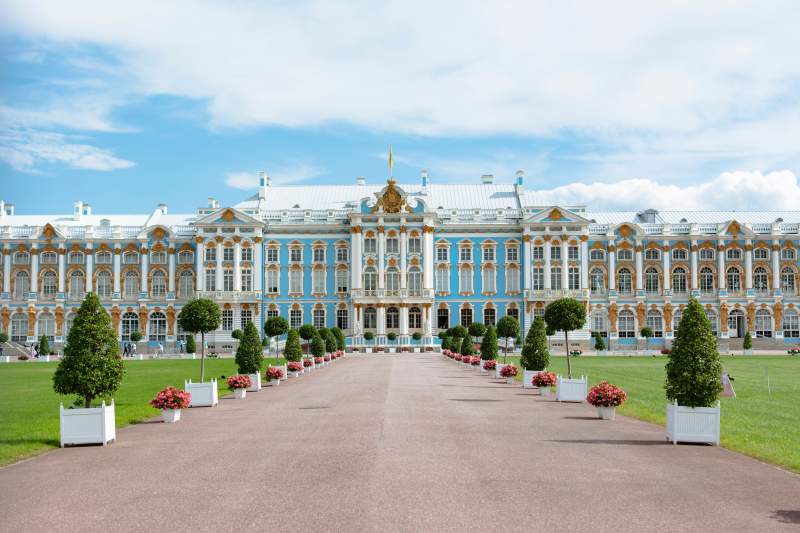
The Catherine Palace. Credit: Vitali Adutskevich (@vadutskevich) via Unsplash
However, Rastrelli’s most dramatic works are located not in the city center, but in the suburbs, in the town of Tsarskoye Selo (Pushkin) and Peterhof. The Catherine Palace with its lavish interiors and mesmerizing turquoise façade punctuated by a vibrant, gold-leafed onion dome, and the ornate Peterhof Palace, sometimes referred to as the “Russian Versailles” thanks to its exuberant fountains, are both recognized as UNESCO World Heritage Sites and are among the top tourist destinations in the city.
Towards the end of the 18th century, the dramatic splendor of the Baroque style gave way to rigorous, rational Classicism, which we’ll tell you about in our next article.
